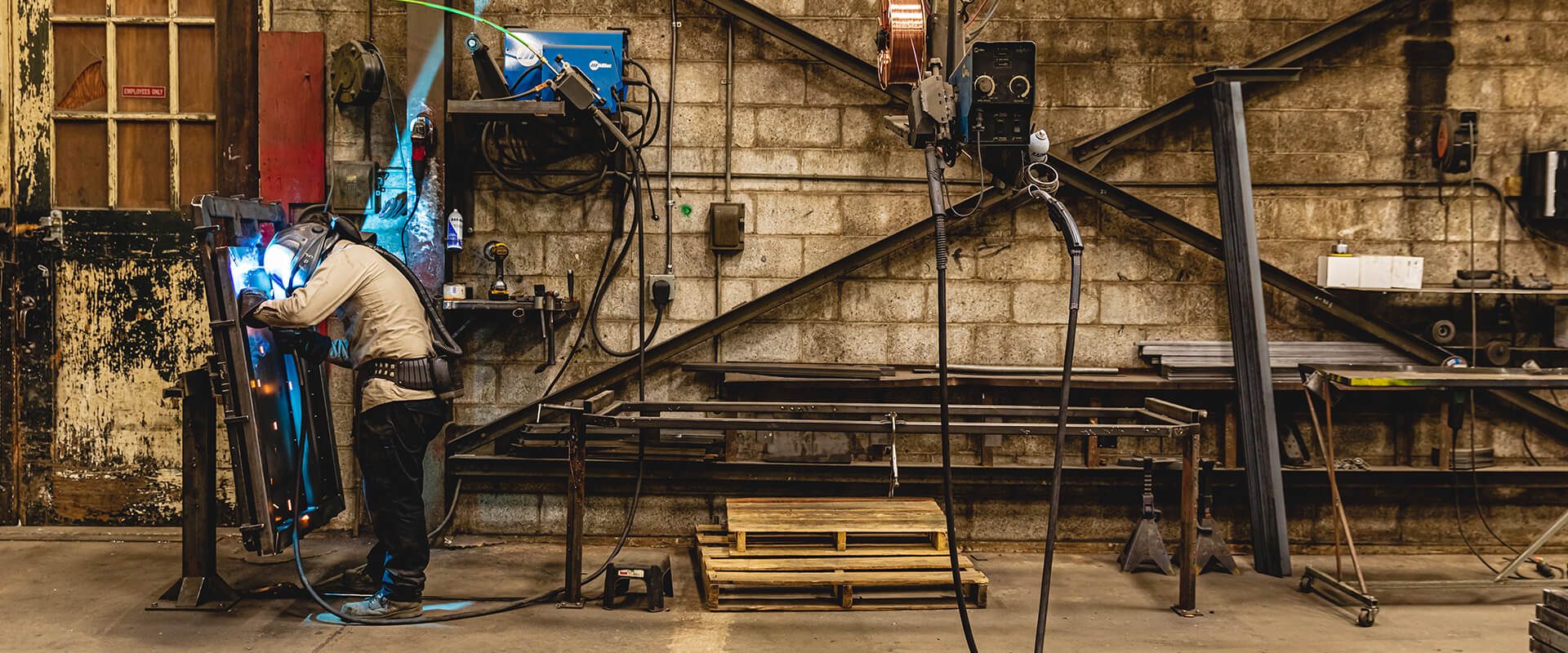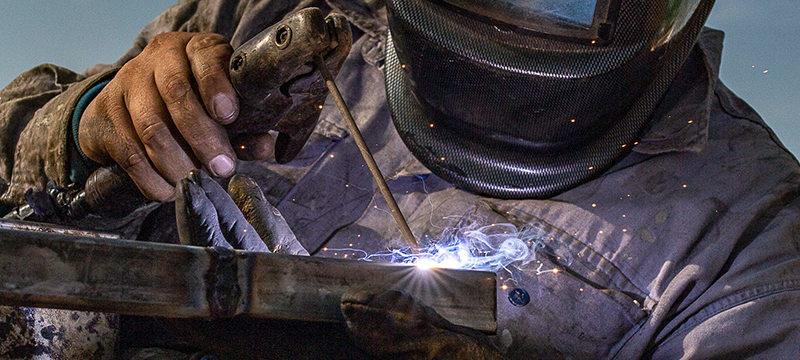Best practices to spot and resolve weld flaws in Montana Mobile Welding and Repair Belgrade Welding
Usual Welding Fixing Issues and Exactly How to Address Them Effectively
Welding repair services often come across a variety of concerns that can threaten the stability of the end product. Usual issues consist of poor penetration, porosity, and imbalance, to name a few. Each problem presents special challenges that call for particular techniques for resolution. Recognizing these concerns is essential for welders aiming to enhance their abilities and end results. This discussion will explore these usual welding repair issues and efficient approaches to resolve them.
Poor Infiltration
Poor infiltration happens when the weld steel fails to totally fuse with the base material, causing weak joints and possible structural failures. This concern typically stems from inadequate warm input, incorrect electrode angle, or inappropriate welding speed. Welders may run into poor penetration as a result of a mistake of the required criteria for a certain material density or kind. Additionally, contamination on the base material's surface can prevent effective bonding, exacerbating the issue. To address poor penetration, welders should assure proper setups on their devices and keep a tidy job surface. Regular assessment of welds is recommended to identify any kind of deficiencies early, permitting timely adjustments and the prevention of jeopardized structural honesty in bonded assemblies.
Porosity
Porosity is a common defect in bonded joints that manifests as tiny gas bubbles entraped within the weld steel. This flaw can jeopardize the honesty of the weld, leading to decreased strength and prospective failing under anxiety. Montana Mobile Welding and Repair Fabrication. Porosity commonly develops from contamination, wetness, or inappropriate welding techniques, which permit gases to run away into the molten weld pool. To resolve porosity, welders should guarantee correct surface prep work, maintain a tidy working atmosphere, and use appropriate welding criteria. In addition, selecting the appropriate filler product and securing gas can mitigate gas entrapment. Regular evaluation and screening of welds can aid identify porosity early, guaranteeing prompt corrective actions are taken, therefore preserving the quality and reliability of the welded framework
Imbalance
Misalignment in welding can arise from numerous variables, consisting of improper setup and thermal expansion. Understanding the source is important for effective resolution. Several correction strategies are readily available to realign components and ensure structural honesty.
Sources of Imbalance
Welding imbalance usually comes from a selection of underlying issues that can compromise structural integrity. One primary reason is inappropriate fit-up of parts before welding, which can bring about voids and uneven surfaces. Variations in thermal growth throughout the welding process can likewise lead to distortion, especially if the materials being signed up with have different coefficients of expansion. In addition, insufficient clamping and fixturing might stop working to hold elements securely in position, causing movement throughout welding. Improperly conserved equipment, consisting of welding devices and devices, may introduce disparities in the weld grain, more contributing to imbalance. Driver error, stemming from insufficient training or experience, can also play a substantial function in creating misaligned welds.

Correction Techniques Available
Attending to misalignment successfully calls for a mix of rehabilitative techniques tailored to the specific issues at hand. One common method is using fixtures or jigs to hold elements in the appropriate placement during welding, making certain regular positioning. Additionally, preheating the products can help reduce distortion and improve fit-up. For considerable imbalance, mechanical adjustment techniques, such as making use of hydraulic jacks or clamps, can be employed to correct the placement prior to welding. Post-weld heat treatment may likewise be necessary to relieve stress and anxieties caused by imbalance. Careful examination and change during the configuration phase can prevent misalignment issues from ending up being considerable issues, promoting a smoother welding procedure and boosting overall architectural honesty.
Distortion
Distortion is an usual difficulty in welding that can develop from various aspects, including uneven heating and air conditioning. Recognizing the root causes of distortion is necessary for implementing effective avoidance strategies. Resolving this problem not only enhances structural integrity however also boosts the general quality of the weld.
Reasons of Distortion
When based on the extreme warm of welding, products often go through adjustments that can result in distortion. This sensation primarily emerges from thermal growth and tightening during the welding procedure. As the weld area warms up, the material increases; upon cooling, it acquires, which can create interior stresses. Additionally, irregular heating throughout a workpiece can aggravate these anxieties, causing warping or bending. The kind of material also plays a significant role; steels with varying thermal conductivity and coefficients of expansion might respond differently, resulting in unpredictable distortions. Additionally, inadequate joint style and poor fixturing can contribute to misalignment throughout welding, boosting the chance of distortion. Recognizing these causes is important for reliable welding repair and avoidance techniques.
Prevention Techniques
Efficient avoidance techniques for distortion throughout welding focus on regulating warmth input and making sure appropriate joint style. Keeping a consistent warm input aids to reduce thermal development and tightening, which can bring about distortion. Utilizing techniques such as pre-heating the work surface can additionally minimize the temperature gradient, advertising uniform heating. Furthermore, selecting ideal joint designs, such as T-joints or lap joints, can boost stability and lower stress focus. Executing correct fixturing to safeguard the work surfaces in location further aids in preserving placement throughout the welding procedure. Staggered welding sequences can distribute heat a csa w59 lot more uniformly, avoiding local distortion. By applying these strategies, welders can significantly lower the possibility of distortion and enhance the overall top quality of their welds.
Splitting
Fracturing is a typical problem run into in welding repair work, commonly resulting from numerous variables such as improper cooling prices, product selection, or poor joint preparation. The event of cracks can significantly compromise the honesty of the weld, resulting in prospective failures throughout operation. To address this issue, welders need to initially examine the source, making sure that products work and properly selected for the specific application. Additionally, regulating the air conditioning price during the welding procedure is necessary; fast cooling can cause anxiety and cause cracking. Correct joint layout and prep work additionally add to minimizing the threat. Executing these methods can boost weld high quality and sturdiness, inevitably reducing the possibility of cracking in ended up weldments.

Incomplete Blend
A considerable problem in welding fixings is insufficient fusion, which happens when the weld steel does not properly bond with the base material or previous weld passes - Montana Mobile Welding and Repair Welding. This problem can bring about weak points in the joint, possibly endangering the integrity of the bonded framework. Factors contributing to insufficient fusion consist of not enough heat input, incorrect welding strategy, and contamination of the surfaces being joined. To address this concern effectively, welders need to assure correct pre-weld cleaning and surface prep work, as well as readjust their welding parameters to accomplish adequate penetration and blend. Regular inspection throughout the welding process can likewise help identify incomplete combination early, enabling prompt rehabilitative Recommended Site measures to enhance the general quality of the weld
Overheating
While welding fixings can improve structural integrity, overheating presents a substantial challenge that can bring about product destruction. Excessive warm throughout welding can alter the mechanical residential or commercial properties of metals, causing decreased toughness, boosted brittleness, and warping. This sensation is especially vital in high-stress applications where architectural reliability is paramount. Determining overheating can entail visual evaluations for staining or distortion, in addition to keeping an eye on temperature during the welding process. To mitigate the dangers connected with overheating, welders should employ proper methods, such as regulating warmth input, readjusting traveling speed, and using appropriate filler materials. In addition, executing pre- and post-weld heat treatments can assist restore material residential properties and enhance the total top quality of the repair service, ensuring long-lasting efficiency and safety and security.
Regularly Asked Concerns
What Are the Usual Indicators of a Welding Flaw?

Exactly How Can I Examine My Welds for Quality?
To examine welds for high quality, one can utilize visual evaluations, ultrasonic testing, and radiographic techniques. Each technique guarantees structural stability, determines problems, and confirms adherence to specified standards, inevitably enhancing the integrity of the welded joints.
What Safety and security Safety Measures Should I Take While Welding?
When welding, one must prioritize security by using proper individual safety equipment, ensuring appropriate air flow, protecting flammable products away, keeping a clean work space, and knowing environments to avoid mishaps and injuries.
Can I Fix a Weld Without Redoing the Entire Joint?
Repairing a weld without redesigning the whole joint is possible, relying on the damages (Montana Mobile Welding and Repair). Methods such as grinding, including filler product, or making use of a welding process can effectively address specific flaws while preserving the surrounding framework
What Equipment Are Important for Effective Welding Fixes?
Vital devices for effective welding repair work include a welding maker, cable brush, mill, safety equipment, clamps, and filler products. Each device plays a crucial function in ensuring quality and security during the repair process. Porosity typically develops from contamination, dampness, or incorrect welding methods, which permit gases to leave into the liquified weld pool. Poorly kept tools, consisting of welding devices and devices, may present incongruities in the weld bead, further adding to imbalance. When subjected to the extreme warm of welding, materials typically undertake modifications that can lead to distortion. Breaking is an usual problem encountered in welding repair services, typically resulting from numerous factors such as improper cooling rates, material choice, or poor joint preparation. A substantial issue in welding fixings is insufficient blend, which occurs when the weld metal does not properly bond with the base material or previous weld passes.